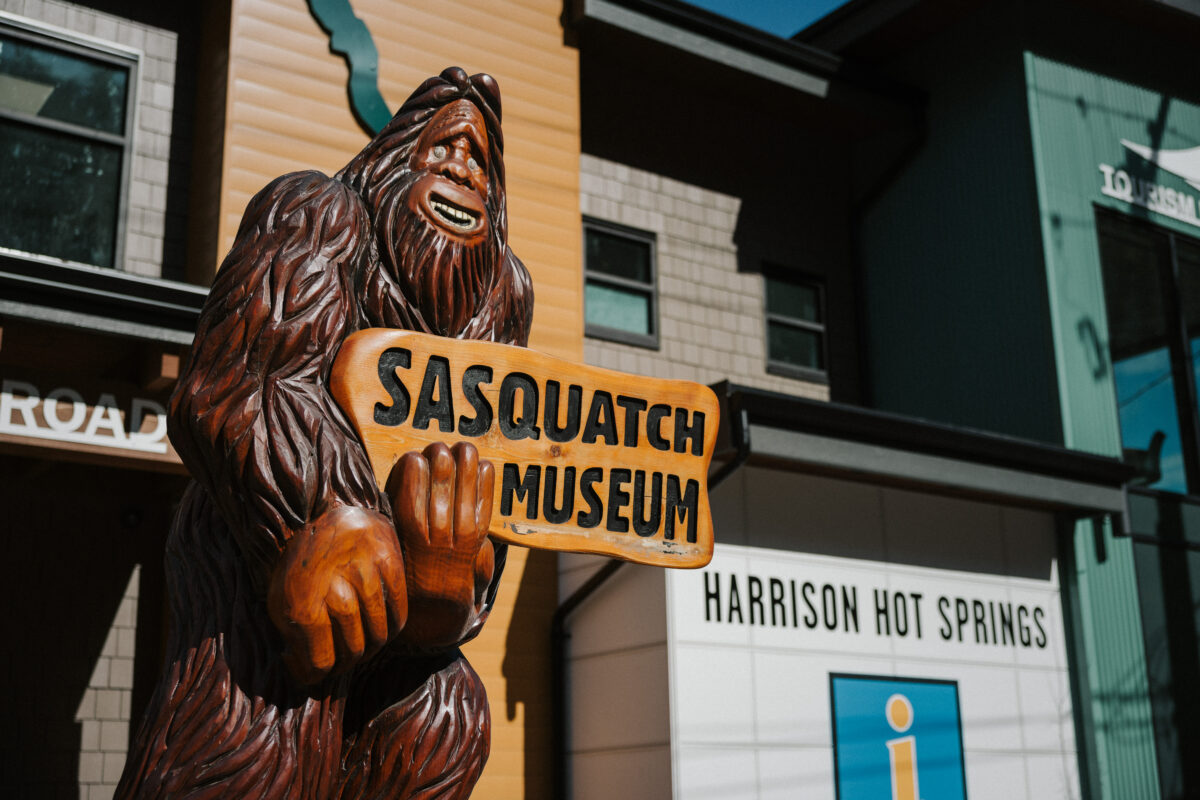The large and hairy Sasquatch has captured people’s imaginations for millennia. In British Columbia’s Harrison River Valley, the newly opened Harrison Visitor Centre and Sasquatch Museum celebrates this famous character. The Harrison River Valley, known for hot springs, mountains, and rivers, is about 90 minutes east of Vancouver and three hours northeast of Seattle.
While many people admire Squatch in his kitschy Bigfoot form, others love the idea that such a wild creature could possibly live so close to modern humans, hidden in the forests of the Pacific Northwest. The Sts’ailes — sovereign Coast Salish First Nation people who have long lived in the Harrison River Valley — take Sasquatch very seriously as a spiritual being who watches over the land and can move between the physical and spiritual realms at will. The Sts’ailes word for the creature is Sa:sq’ets, which means “hairy man.” They have generations of oral stories about Sa:sq’ets, which is probably where the word Sasquatch came from.

“It is an honor to be a part of the Harrison Visitor Centre & Sasquatch Museum planning committee and to contribute an authentic Sts’ailes perspective on the Sa:sq’ets,” Boyd Peters, rights and title director of Sts’ailes, said in a press release. “The stories, culture, teachings and history of our People with the Sa:sq’ets are to be respected for future generations. The connection to our sacred lands and healing are to be portrayed with a deep sense of pride and reverence with the Sa:sq’ets.”

The Harrison Visitor Centre and Sasquatch Museum (a collaborative effort between Tourism Harrison, the Sts’ailes, and the accessibility-focused Rick Hansen Foundation) offers diverse exhibits. The Land of the Giants is a standout feature, showcasing the region’s indigenous wildlife, such as bald eagles and sturgeon, alongside the iconic Sasquatch. Visitors will also see a recreated Sts’ailes longhouse, castings of suspiciously large feet, interpretive panels, and storyboards about prominent Sasquatch researchers, such as Thomas Steenburg and John Green.


